Giving an insulin injection using an insulin pen
Attach needle to insulin pen
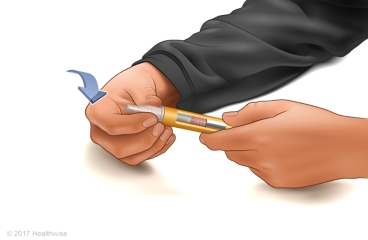
Insulin pens are either reusable or disposable. For a reusable pen, put the insulin cartridge into the pen. Disposable pens already have an insulin cartridge.
Before using cloudy insulin, such as NPH and premixed insulin, gently roll the pen between your palms 10 times. Then tip the pen up and down 10 times. Do not shake the pen. The insulin should look milky white.
Follow the directions for how to screw a new needle onto your pen.
Get ready
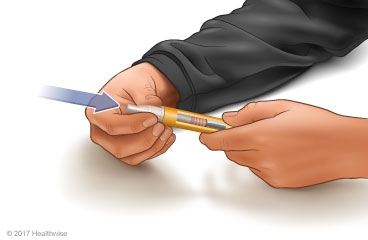
Remove the outer cap from the needle. Keep this outer cap. You will use it later to safely dispose of the needle.
Remove needle cover
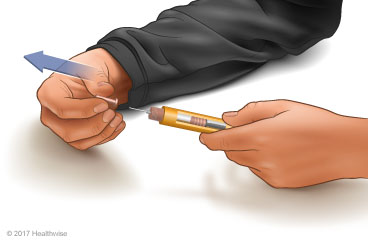
Remove the inner cover from the needle. Be careful not to prick yourself.
Prime the needle
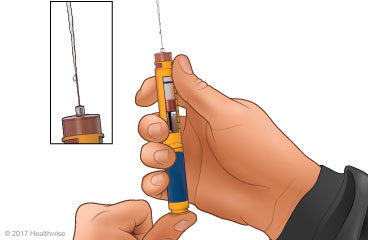
Before each shot, prime the needle. Priming removes air from the needle.
Turn the dose knob to 2 units. Hold your pen with the needle pointing up. Tap the cartridge holder gently to move any air bubbles to the top.
Push the injection button all the way in. Watch for a stream or drop of insulin to come out of the needle. If it does not, repeat this step again.
Pick a spot
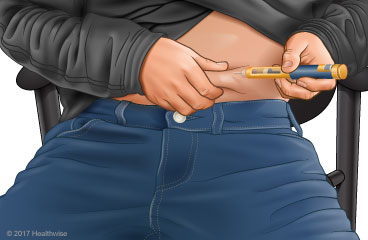
Clean the area of skin where you will give the shot. If you use alcohol to clean the skin before you give the injection, let it dry.
Use a different spot each time you inject insulin. That’s because using the same spot every time can cause bumps or pits to form in your skin.
For example, inject your insulin above your belly button, then the next time use your upper thigh, and then the next time inject below your belly button.
Put it in
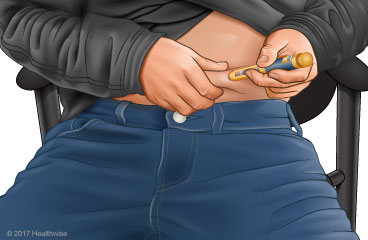
Turn the dose knob to the number of units of insulin that you need to inject.
Push the needle into your skin. Most people can inject using a 90-degree angle and without pinching the skin. Adults and children who are very lean and people who use longer needles may need to pinch the skin to avoid injecting into muscle.
Inject and wait

Put your thumb on the injection button and push it in until it stops. Keep the pen in your skin. Hold the dose knob in for 10 seconds (or to the number that the manufacturer recommends). Then pull the needle out of your skin. Do not rub the area.
Recap

Put only the outer cap back over the needle. The thin, inner cover is harder to put back on and you may stick yourself.
Needle safety

After covering the needle with the outer cap, unscrew the needle and throw it away in a sharps container or other solid plastic container. You can get a sharps container at your drugstore.
Don’t share insulin pens with anyone else who uses insulin. Even when the needle is changed, an insulin pen can carry bacteria or blood that can make another person sick.
Current as of: April 16, 2019
Author: Healthwise Staff
Medical Review:E. Gregory Thompson MD – Internal Medicine & Adam Husney MD – Family Medicine & Kathleen Romito MD – Family Medicine & David C.W. Lau MD, PhD, FRCPC – Endocrinology & Rhonda O’Brien MS, RD, CDE – Certified Diabetes Educator & Heather Quinn MD – Family Medicine
This information does not replace the advice of a doctor. Healthwise, Incorporated, disclaims any warranty or liability for your use of this information. Your use of this information means that you agree to the Terms of Use. Learn how we develop our content.

